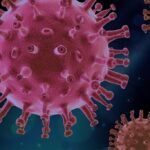How to control blodd pressure
What is Blood Pressure?
Blood pressure is the engine that keeps the heart pumping.
The force of the blood pushing against the artery walls as the heart pumps it around the body is what we call blood pressure. It’s a crucial physiological indicator since it reveals the cardiovascular system’s inherent flexibility. Understanding the pumping motion of the heart and the resistance experienced by blood arteries can be gleaned from the blood pressure reading, which is expressed as two values, systolic over diastolic.
Systolic Blood Pressure The force exerted by the heart when it contracts and blood is pushed into the arteries is represented by the higher systolic pressure number. During a heartbeat, this pressure reaches its maximum.
The pressure in the arteries while the heart is at rest and refilling with blood between beats is known as diastolic pressure, and it is the lower of the two values.
Blood pressure is normally measured in millimeters of mercury (mmHg), which corresponds to the height of a mercury column in a standardized blood pressure measuring instrument.
Method of Measurement:
A sphygmomanometer, which consists of an inflated cuff placed around the upper arm and a pressure gauge, is used to take a patient’s blood pressure. When the cuff is inflated, blood flow is temporarily halted, and the doctor can listen with a stethoscope for any abnormalities. These sounds, known as Korotkoff sounds, correspond to the resumption of blood flow, reflecting the systolic and diastolic pressures.
Within the Normal
Many health professionals consider a blood pressure reading of 120 over 80 to be normal. If your readings are outside of this normal range, it may be time to see your doctor.
Control Systems
The body keeps blood pressure under tight control to guarantee proper organ perfusion. Blood pressure is controlled by a variety of elements, including the autonomic nervous system, hormonal impacts, and local factors within blood vessels. In order to maintain equilibrium, the body’s regulatory system relies heavily on baroreceptors, specialized sensors located in blood vessels.
Important Clinical Implications:
When evaluating cardiovascular health, blood pressure is a key indicator. Long-term hypertension puts patients at risk for cardiovascular disease, stroke, and renal failure.
Some things to keep in mind for lowering blood pressure:
- Nutritious Diet Fruits, vegetables, lean proteins, and low-fat dairy products are all recommended. Cut back on salt.
- The recommended amount of weekly exercise is 150 minutes of moderate intensity activity.
- Third, keep at a healthy weight; even a modest reduction in weight can reduce blood pressure.
- Reduce Alcohol Consumption Drinking alcohol should be done so responsibly. Typically, this means no more than one alcoholic beverage per day for women and no more than two for males.
- Don’t Light Up High blood pressure and damaged blood vessels are two health risks associated with smoking.
- To better deal with stress, try some yoga, meditation, or deep breathing exercises.
- Although there isn’t strong evidence linking the two, reducing caffeine intake may assist some people.
- Routine Examinations, Number Eight Check your blood pressure frequently and see a doctor if necessary.
- Before beginning a new workout routine or making other major changes to your lifestyle, it is recommended that you first speak with your doctor.
Certainly! Consuming these fruits may help lower blood pressure:
- Bananas are a good source of potassium, which can reduce the effects of salt.
- Berries (such as blueberries and strawberries) are an excellent source of fiber and antioxidants.
- Thirdly, oranges are a good source of vitamin C and potassium.
- Watermelon’s citrulline content suggests it may help reduce hypertension.
- Five, kiwi: a fruit rich in potassium and vitamin C.
- Apples are a great source of fiber and many chemicals that are good for your heart.
- Seventh, grapes have resveratrol, a natural chemical that may reduce blood pressure.
Keep in mind that these fruits are just one part of a heart-healthy lifestyle that requires a well-rounded approach.
.
Changing to more healthful behaviors can help lower blood pressure. Keep in mind these routines:
- Regular Exercise: Make time every day for some form of exercise, whether it’s walking, jogging, or cycling.
- Conscious Consumption: Avoid mindless nibbling and focus on controlling your portion sizes. Take your time and enjoy your meal.
- Cut Down on Sodium Be mindful of salt in your diet; pick fresh, natural foods over processed ones.
- Reduce Your Intake of Caffeine and Alcohol 4 The key is moderation. High blood pressure can be caused by consuming too much caffeine or alcohol.
- Stress Management: Engage in activities like meditation, deep breathing, or yoga that help you relax and unwind.
- Adequate Sleep: Get between seven and nine hours of restful sleep every night.
- If you smoke, think about putting an end to your habit. Blood pressure and blood vessel health are both negatively affected by smoking.
- Regular Monitoring: *Regularly* monitor your blood pressure to keep yourself updated on any changes.
- Maintaining a normal blood pressure level might be aided by sticking to these practices regularly throughout time. For specific recommendations, it’s best to speak with a medical expert.
Hypertension, or high blood pressure, is a major cause of death and disability worldwide. Uncontrolled blood pressure has serious hazards and can have devastating effects on one’s health. It is critical for individuals and healthcare institutions everywhere to have a firm grasp on these dangers.
Diseases of the Heart and Blood Vessels
The increased chance of developing cardiovascular illnesses is a major concern of untreated high blood pressure. Conditions including coronary artery disease, heart attack, and heart failure can develop as a result of hypertension’s toll on the heart. Constant strain on blood vessels can cause injury and other health problems.
Stroke:
High blood pressure is a leading cause of strokes. High blood pressure can damage brain blood arteries, increasing the risk of rupture or occlusion. Both ischemic strokes (when blood flow is restricted) and hemorrhagic strokes (when blood flow is disrupted) are more likely to occur as a result of this.
Renal Failure:
The kidneys are essential in maintaining a healthy blood pressure level. Damage to the kidneys’ blood arteries from untreated hypertension might impair kidney function. Long-term, untreated hypertension greatly increases the likelihood of developing chronic renal disease and ultimately kidney failure.
Impaired Vision:
The eyes are sensitive to fluctuations in blood pressure. Eye diseases like hypertensive retinopathy are caused by hypertension-related damage to blood vessels. If neglected, this can cause severe vision loss or blindness.
Aneurysms:
Aneurysm development and rupture may be facilitated by persistently high blood pressure. A ruptured aneurysm, a protrusion in a blood vessel, can lead to potentially fatal internal bleeding.
The Decline of Mental Capacity
Hypertension has been linked to cognitive loss in the form of diseases like Alzheimer’s and dementia, according to recent studies. High blood pressure, which reduces blood flow to the brain, may play a role in certain neurological problems.
Difficulties During Pregnancy:
Gestational hypertension, often known as high blood pressure, is dangerous for both the mother and the unborn child. Preeclampsia, early birth, and low birth weight are all possible outcomes.
Global Consequences:
The effects of hypertension are felt not only by individuals but also by healthcare systems around the world. The cost of treating hypertension and its complications is high, especially when hospitalization and long-term care are factored in. Moreover, the loss of production owing to health difficulties associated to high blood pressure hurts economies worldwide.
In conclusion, the dangers of hypertension are many and varied, posing challenges to both individuals and healthcare systems around the world. These risks can be reduced and the severe effects of uncontrolled hypertension avoided with early detection, changes in lifestyle, and appropriate medical therapies. In order to combat this unseen but persistent global health concern, it is crucial to raise public awareness, encourage regular checkups, and provide easy access to healthcare services.







